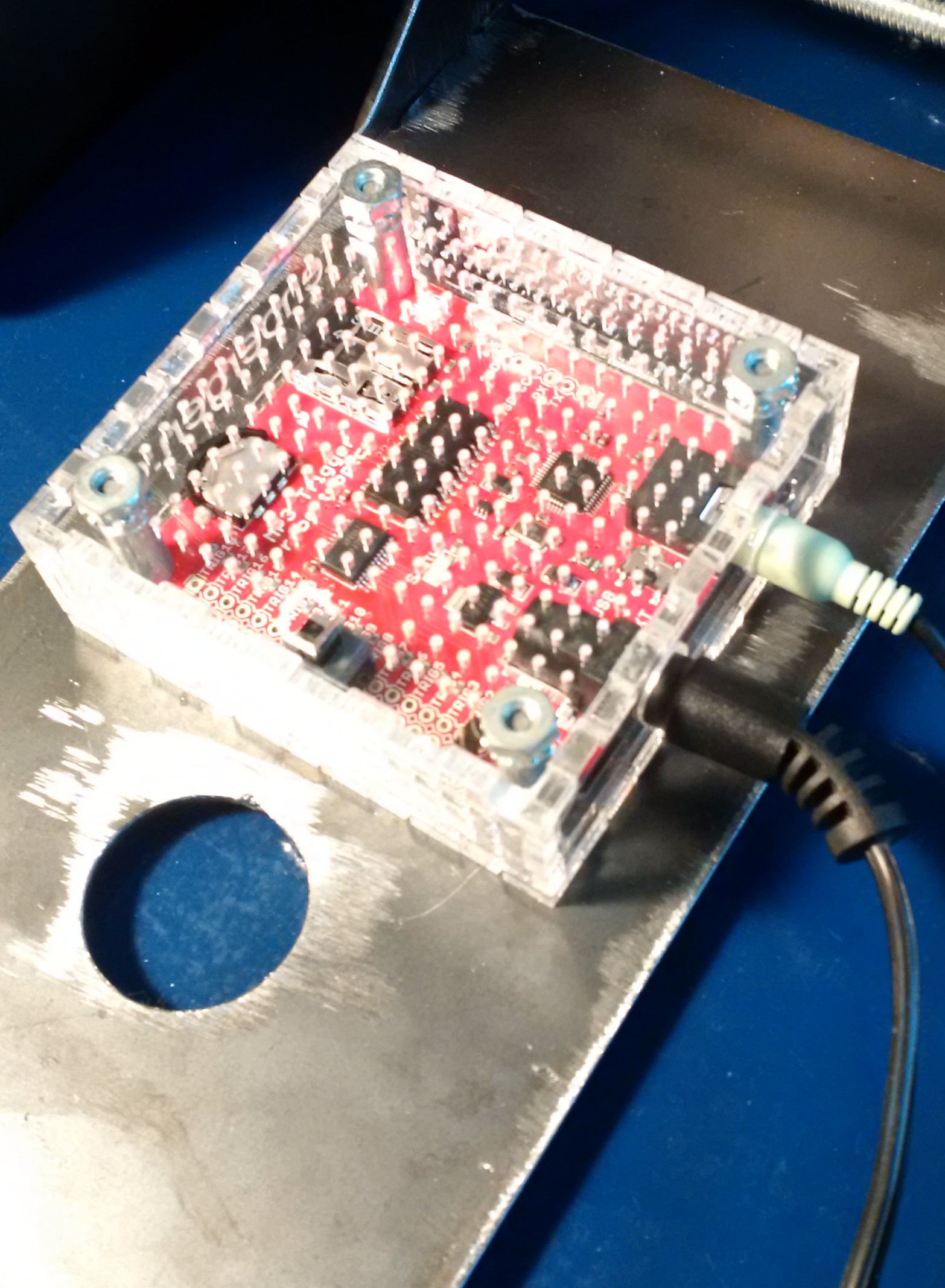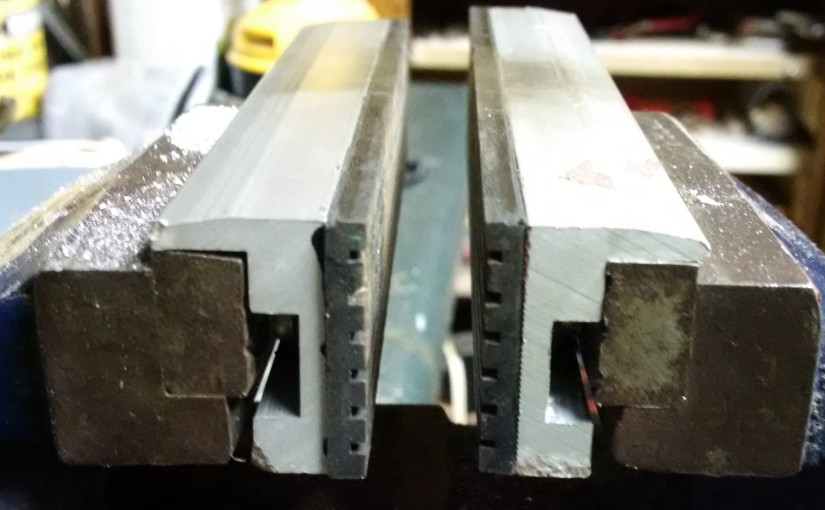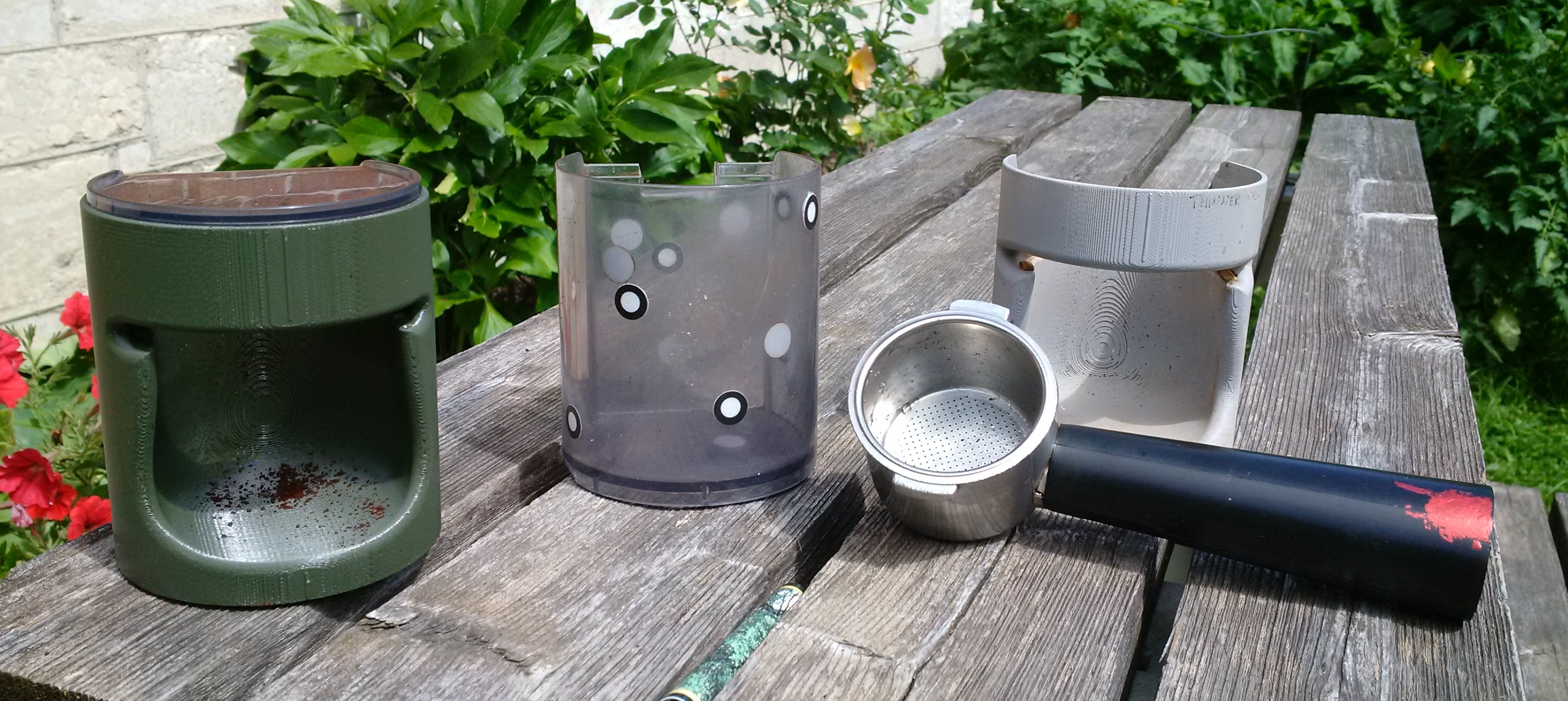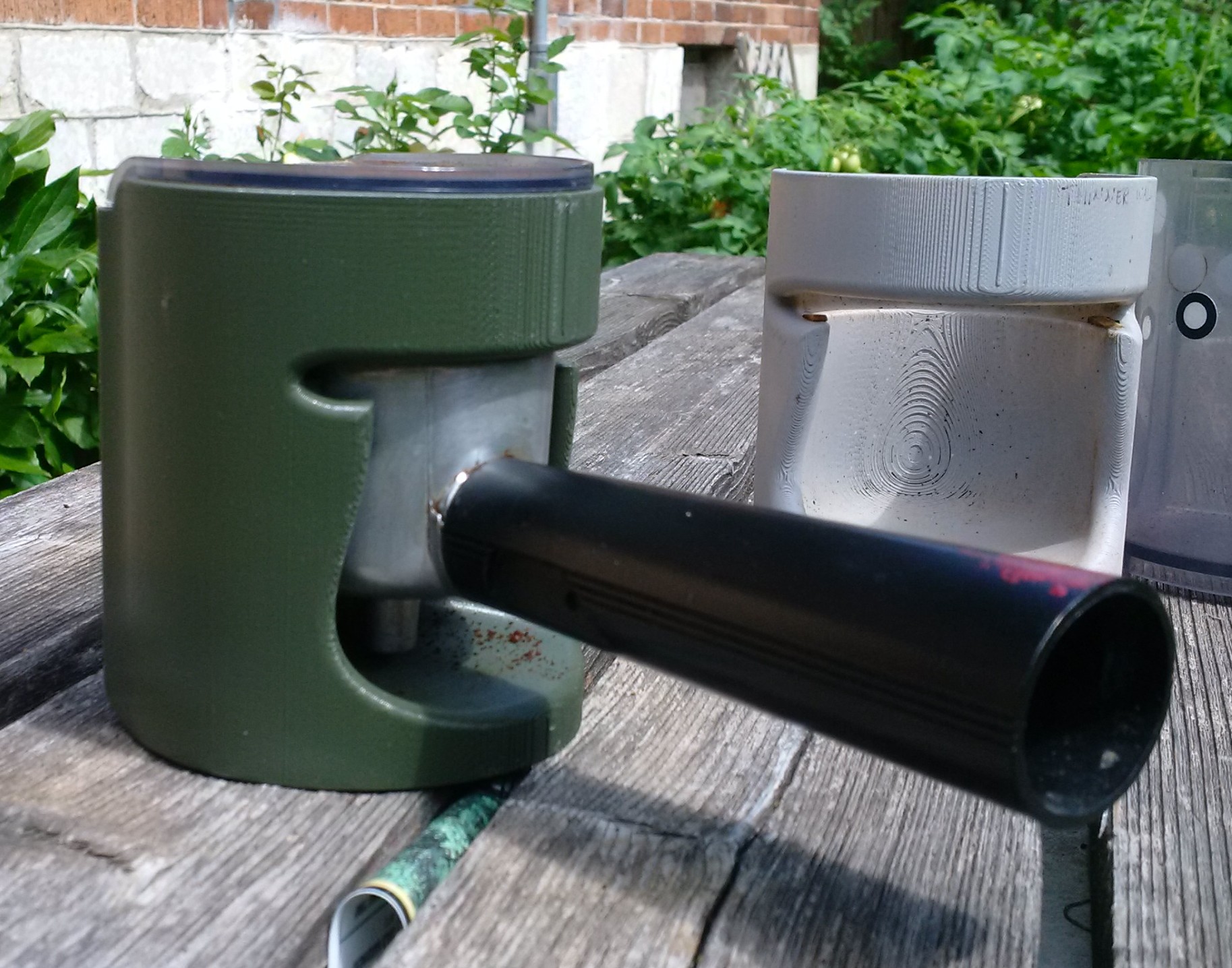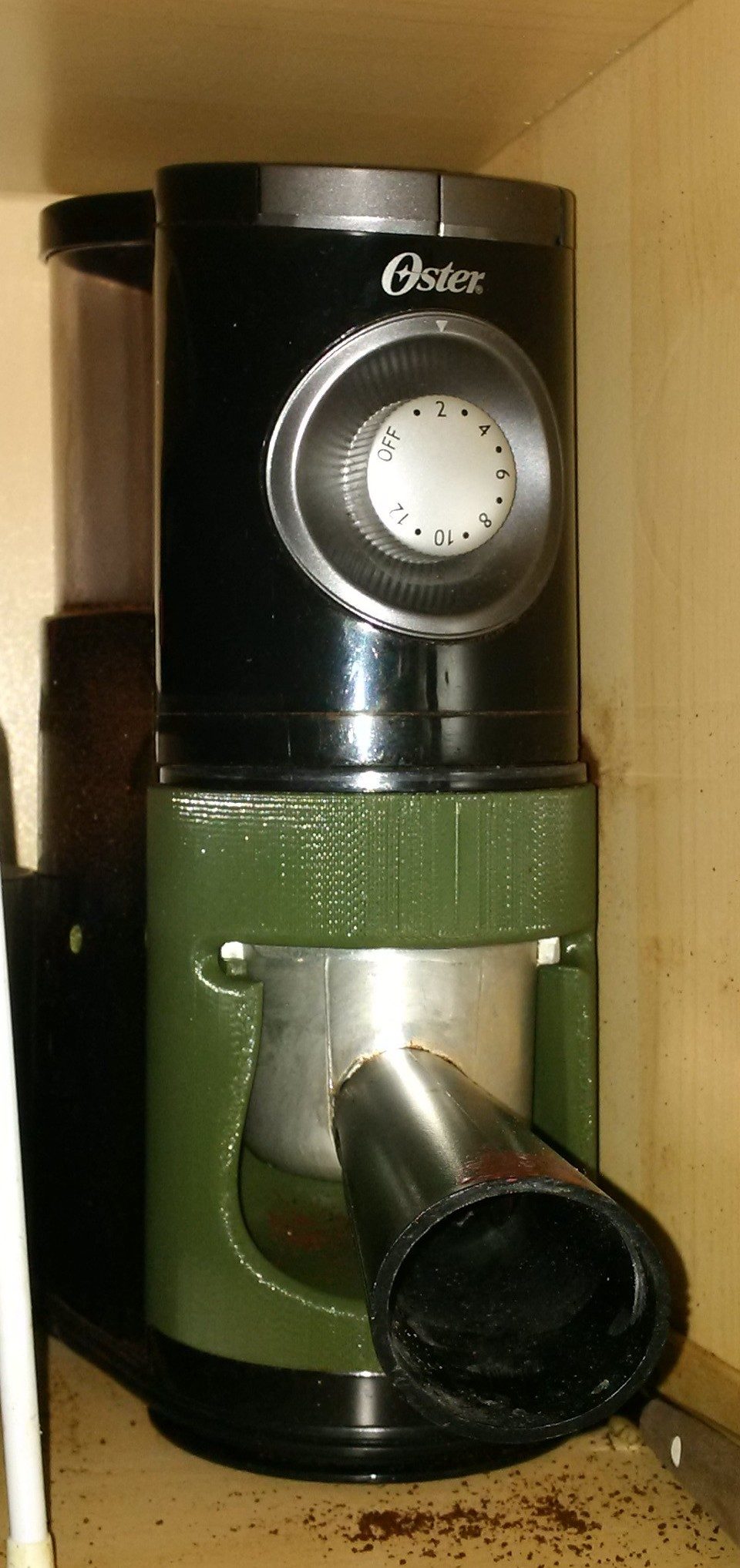 I have a favourite mechanical pencil with built-in mechanical eraser. I had strapped two separate ones together in university, so when I found them as one unit a few years ago I was pretty excited. The casing broke, and since I doubt I will find another pencil like this in town I figured I would model the casing, make it a bit stronger, and 3D print it.
I have a favourite mechanical pencil with built-in mechanical eraser. I had strapped two separate ones together in university, so when I found them as one unit a few years ago I was pretty excited. The casing broke, and since I doubt I will find another pencil like this in town I figured I would model the casing, make it a bit stronger, and 3D print it.
The model has three little splines cut out of the hole on the picture. I didn’t think the 3D printer would have the resolution to print those, and I was right. Didn’t think that would be a really big deal, it’s plastic, I just cut them out later.
 Between this project and the coffee grinder bucket I am wondering how accurate the print process is and where in the process things go wrong. I measured several surfaces and they were all “out” (as in thicker) by about 0.1mm. Not a lot for a model that’s printed for looks, but enough that I had to drill out all the holes on this thing. Easier to fix than if there had not been enough material, but annoying still. I want to find out more about this, so I’ll have to scan, model and print some reference item to get a better understanding. Future project…
Between this project and the coffee grinder bucket I am wondering how accurate the print process is and where in the process things go wrong. I measured several surfaces and they were all “out” (as in thicker) by about 0.1mm. Not a lot for a model that’s printed for looks, but enough that I had to drill out all the holes on this thing. Easier to fix than if there had not been enough material, but annoying still. I want to find out more about this, so I’ll have to scan, model and print some reference item to get a better understanding. Future project…

